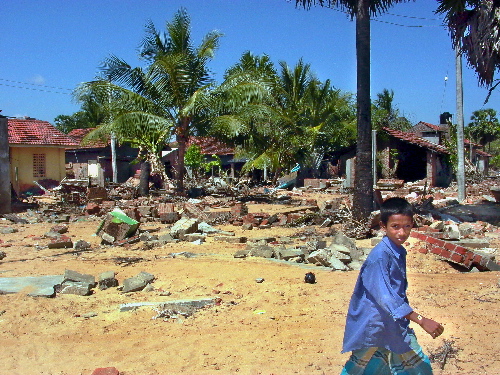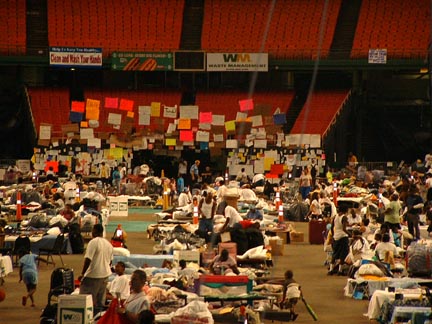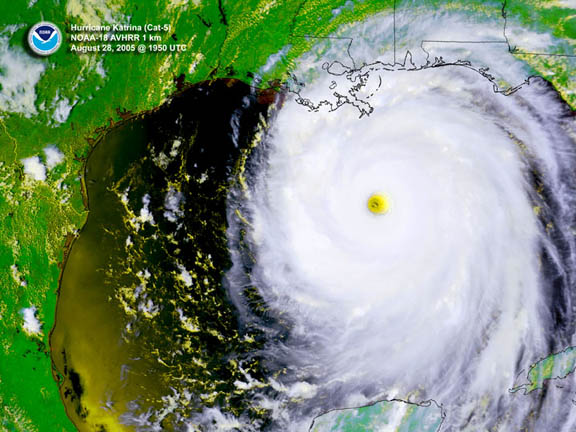
|
As hurricanes batter the coast, rivers flood, forest fires rage, tornadoes
swirl,
tsunami fears abound and terrorism thrives, www.psychceu.com is pleased to
announce
a new course:
|
A Field Guide to Disaster Mental Health: The Very Big Wave and the Mean Old Storm  After
the tsunami Katie Amatruda, PsyD, MFT, CST-T, BCETS |
This course meets the qualifications for 10 hours of continuing educationThis course qualifies for 4 non-contact training hours for the Association for Play Therapy (Provider # 02-711)
CA BBS, FL, NAADAC, NBCC, TX SBEPC, TXBSWE
|
Disaster mental health is designed to help victims and relief workers learn to effectively cope with the extreme stresses they will face in the aftermath of a disaster. This course is A Field Guide, including practical interventions and a recounting of what it is actually like to go to a community in the aftermath of a disaster. Included are numerous links and resources from experts in traumatology and the newly emerging field of disaster mental health. Please join us in this 10 unit course. |

Astrodome - Photograph by Chris Lewis
|
Learning Objectives In this 10 unit course clinicians will:
|

is approved by the:
CA BBS - California Board of Behavioral Science accepts our CE Provider Approvals through APA, NASW, and NBCC. Course meets the qualifications for hours of continuing education credit for LMFTs, LCSWs, LPCCs, and/or LEPs as required by the California Board of Behavioral Science
Florida Board of Clinical Social Work, Marriage and Family Therapy, Mental Health Counseling (BAP 753 )
NAADAC - The Association for Addiction Professionals (#575)
NBCC - National Board for Certified Counselors - www.psychceu.com has been approved by NBCC as an Approved Continuing Education Provider, ACEP No. 6055. Programs that do not qualify for NBCC credit are clearly identified. www.psychceu.com is solely responsible for all aspects of the programs. (ACEP #6055)
Texas State Board of Examiners of Professional Counselors (#1761)
The Texas Board of Social Work Examiners (#6246)
www.psychceu.com
maintains responsibility for the program.
|
Sri Lanka Sari after the Tsunami
Photograph by Kate Amatruda
Rules for the successful disaster mental health worker: 1.It's not about you, it is about showing up and being there for others. Leave your ego at home. 2. Disaster Mental Health is often modeled upon a military model, with which many of us are unfamiliar and uncomfortable. When you are sent to a disaster, the term used is 'deployment'. Follow the 'chain of command'. 3. You are not in charge! Assignments are made somewhat randomly, often based upon the needs of the organization when you show up. Accept the decisions of the team leader. You may have much more experience than your leader. Bring all of your clinical smarts with you, but do not sabotage the person in charge of you, or your team. Leave your ego at home. 4. Say 'yes' to what is asked of you (unless it is unethical or illegal - which I have never seen happen). Be flexible, and do what you are asked to do, even if you don't want to do it. 5. Beware of the 'lone wolf'' syndrome. At the Katrina relief effort, some disaster mental health workers were sent home for going to the Astrodome without permission. Be a team player (a concept remarkably alien to many of us in the mental health field.) 6. DO NOT just show up at a disaster; wait for an organization to send you. "If you are not part of the solution, then you are a part of the problem." If you just show up at a disaster, then you are part of the problem. Don't add stress to an already incredibly stressful situation. 7. Your clients may be other disaster workers and volunteers, rather than the survivors of the disaster. At some agencies, disaster mental health workers are there for the disaster staff and volunteers, not the disaster survivors. If you cannot accept this role, then join under the classification of providing 'mass care' rather than disaster mental health. 8. Avoid passing on rumors, which are rife in a disaster. 9. Watch your personal and professional boundaries - they will be tested. 10.
Don't get HALTED:
11. Be spontaneous - don't forget to play! (Some of the most effective trauma responders are play therapists, because they know how to follow the client, and to play.) 12. Keep your heart open! Using all of your clinical skills, treating everyone with respect and dignity, listening and being present can make a tremendous difference.
|
Disaster Mental Health is not the same as having a clinical practice.
Different skills and a different mind set are necessary to succeed.
At the most basic level, you are going to the clients, they are not coming to you. You will not be sitting in an office, having people line up to see you. Why? People don't like the concept of mental health! By and large, they have survived the disaster due to their resiliency, luck, or any number of factors. For a disaster survivor to admit that she or he 'needs help' rarely happens.
Disaster mental health can feel very chaotic if you are used to a practice in which clients come at appointed times to your office, sit down and talk for 50 minutes, and leave. You may be on your feet for 12 hours at a time. (There were days at when I was in Houston doing disaster mental health for Hurricane Katrina when I started work at 8:00 am and finished at 2:00am. That is an 18 hour day!)
You need to be flexible and personable. The blank slate of doing psychotherapy, of processing transference and projections, does not work in a disaster.
Welcome to Chaos!
Deciding To VolunteerA disaster comes, and your adrenaline level spikes up. Can you go? Can your family, your patients, your work, spare you?
For me, the question is answered by my reaction to seeing the disaster unfold. If, while plugged into CNN, I can not stop the tears from flowing, and I have a feeling that I HAVE to go, that my soul demands that I be there, then the decision is made. I go.
Know about the Disaster
It is important to know as much about the disaster as you can. This helps prepare you for what you might experience. It also gives you information that the survivors, without electricity or access to media, may not know. You also can tell the survivors that you saw their struggle on TV, and are amazed at what they have been through. Do not, however, say that you know what they have been through, because you don't! If you are a survivor of the same disaster, be very careful if you decide to volunteer. Make sure your family is safe, and take care of yourself! You may be traumatized yourself.
Hurricane Katrina

The National Oceanic and Atmospheric Administration called Katrina
"the most destructive hurricane to ever strike the U.S." Then along came Rita, then Wilma...*******
Topics Include:Getting the Call
Preparing to Go
The Journey
Arrival - the Beginnings of Chaos
On Site Training
Hurry up and Wait
Your Assignment - It's Not about you
The Work
Time to Go Home
Re-entry into your Life
IntegrationThis course also includes quotes and links to the following manuals:A Field Manual for Mental Health and Human Service Workers in Major Disasters
Department of Health and Human Services
Substance Abuse and Mental Health Services Administration
Center for Mental Health Services
Author: Deborah J. DeWolfe, Ph.D., M.S.P.H.
Editor: Diana Nordboe, M.Ed.
PSYCHOLOGICAL FIRST AID
Field Operations Guide
Terrorism and Disaster Branch
National Child Traumatic Stress Network
National Center for PTSD
The principal authors (in alphabetical order) included: Melissa Brymer, Chris Layne, Robert Pynoos, Josef Ruzek, Alan Steinberg, Eric Vernberg, and Patricia Watson.
(These manuals are in public domain, and may be copied and distributed without restriction.)*******
Remember: People are stressed in a disaster! You will be stressed! Sometimes the work is simply de-escalating a situation, and suggesting things that will allow your fellow workers to slow down, to take a rest, to regroup. People have made a huge commitment to volunteer at a disaster, and I always try to assist a stressed worker so that he or she will not be sent home.
I know mental health workers who have written reminders of self-care on their hands. These are not complex; we don't write things like:Set task priority levels and create a realistic work plan
Exercise and stretch muscles when possible
Eat nutritionally, avoid junk food, caffeine, alcohol, tobacco
Obtain adequate sleep and rest, especially on longer assignments
Maintain contact and connection with primary social supports
Reduce physical tension by deep breathing, meditating, walking
Use time off for exercise, reading, listening to music, taking a bath
Talk about emotions & reactions with coworkers at appropriate times
Maintain Self-AwarenessOur hands aren't big enough!Instead, we write:Drink Water
Breathe
APA Ethics
We do adhere to the American Psychological Association's Ethical Principles of Psychologists. Our courses are carefully screened by the Planning Committee to adhere to APA standards. We also require authors who compose Internet courses specifically for us follow APA ethical standards.
Many of our courses contain case material, and may use the methods of qualitative research and analysis, in-depth interviews and ethnographic studies. The psychotherapeutic techniques depicted may include play therapy, sandplay therapy, dream analysis, drawing analysis, client and therapist self-report, etc. The materials presented may be considered non-traditional and may be controversial, and may not have widespread endorsement within the profession. www.psychceu.com maintains responsibility for the program and its content.
Katie Amatruda, PsyD, MFT, CST-T, BCETS, is a Licensed Marriage and Family Therapist, Board Certified Expert in Traumatic Stress - Diplomat, American Academy of Experts in Traumatic Stress, and a teaching member of the International Society for Sandplay Therapy. She is a Disaster Service Mental Health volunteer, and has responded to the Hurricane Katrina disaster, as well as to local fires and floods with the Disaster Action Team. She went to Sri Lanka with the Association for Play Therapy and OperationUSA. She has lectured internationally and teaches in the Extended Education departments at U.C. Berkeley and Sonoma State University. She is the author of A Field Guide to Disaster Mental Health: Providing Psychological First Aid, HIV: The Storm, Psyche & Soma, Trauma, Terror and Treatment, and Painted Ponies: Bipolar Disorder in Children, Adolescents and Adults. Her work with trauma is featured in the DVD Trauma Treatment - September 11 - One Year Later, an hour interview with Frontiers.TV in Brooklyn, NY, and her work with children with cancer is shown in the DVD Sandplay Therapy and the Liminal World. She is the co-author of Sandplay, The Sacred Healing: A Guide to Symbolic Process, Reweaving the Web: The Treatment of Substance Abuse, The Safe Harbor Ethics Series and The Witch and The Queen. She practices in Northern California.
Images may be subject to copyright.Take the test online!
Print out your own certificate!
This course counts as a 'regular' (not self-study) course by the CA BBS!
888-777-3773
© 2026. www.psychceu.com. all rights reserved